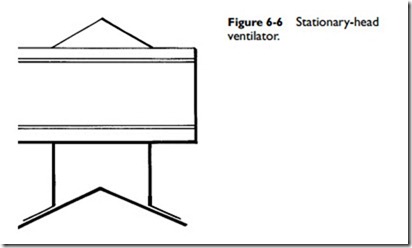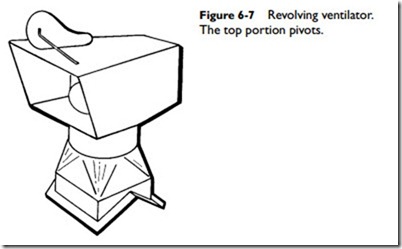Stationary-Head Ventilators
More ventilators are of this type than any other, and when well designed, it is usually considered the most efficient type of gravity ventilator. The chief advantages of stationary-head ventilators are as follows:
1. Higher exhaustive capacity under all wind conditions.
2. No moving parts.
3. Quiet operation.
4. No upkeep.
A stationary head ventilator is illustrated in Figure 6-6.
A typical revolving ventilator is shown in Figure 6-7. This type of ventilator swings on a pivot, aided by the wind vane so that its open end points away from the wind. The inductive action of the wind, in passing around the head, draws air out of the building. In
general, this is not as efficient as the stationary-head ventilator, although it has general use.
A major disadvantage of the revolving ventilator is its low capacity in still air. Furthermore, if the pivot bearings stick so that the head cannot follow the wind, it fails to exhaust air (in some cases even admitting air, rain, or snow). The revolving ventilator also frequently becomes noisy, creaking when changing direction. Constant attention is required to overcome these disadvantages.

